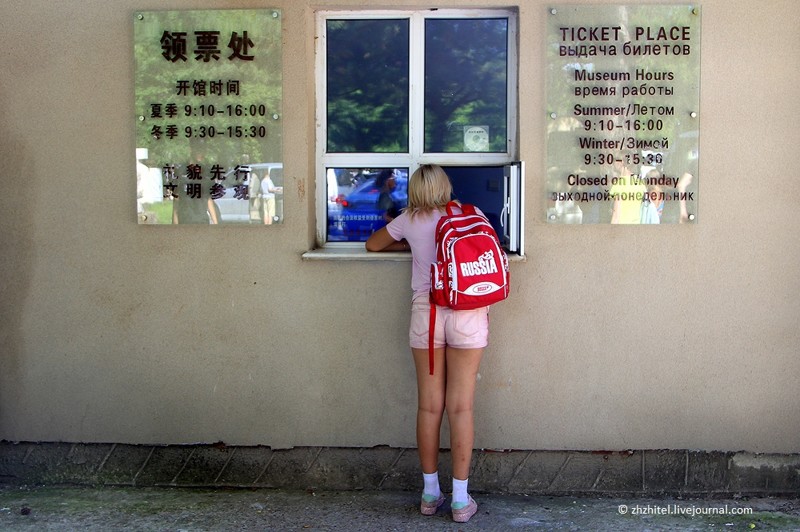The strangest museum in China: Russians are not allowed in (10 photos)
Not far from the Russian-Chinese border in the Aigun district (in another version Aihui) of the Heihe urban district there is a very strange museum. Russian excursions do not take you here. Moreover, despite the fact that inscriptions, signs and even descriptions of the exhibitions are duplicated in Russian, Russians are not allowed into the museum at all. Not for any money.
It’s hard to believe, but when we tried to buy a ticket, we received a categorical refusal.

Officially the museum is called “Aigun Historical Museum”. In theory, this should be an ordinary local history museum, what’s wrong with that?
In fact, everything is not easy. There are different pages in Russian-Chinese relations. It was in Aigun in May 1858 that the Aigun Treaty was signed, establishing the Russian-Chinese border along the Amur River.

The agreement was drawn up and written by Rafail Aleksandrovich Chernosvitov, a Siberian gold miner, a “Petrashevite”, a friend of Count Muravyov, the Governor-General of Eastern Siberia.
The agreement was signed by:
from the side of the Russian Empire: Adjutant General Count N.N. Muravyov and State Councilor of the Ministry of Foreign Affairs Pyotr Perovsky;
from the Qing Empire: Aigun Amban, adjutant general, court nobleman, Imp. Aigun, Amur commander-in-chief Prince Aisingyoro Ishan and assistant divisional chief Dziraming.

For signing the Aigun Treaty, N.N. Muravyov received the title of “Amursky” and became Muravyov-Amursky. In Irkutsk, the triumphal Amur Gate was built on Zamorskaya Street, Zamorskaya Street was renamed Amurskaya. In Blagoveshchensk, on the embankment there is also a monument to the Governor General.

The Chinese consider this treaty unequal. China, weakened by the Opium Wars and the Taiping Rebellion, was forced to make concessions under Muravyov's threat to open a second front. By signing the Treaty of Aigun, China lost a large territory.

I don’t know what is written in hieroglyphs (if anyone knows, please tell me), but these are scenes that depict the signing of the Aigun Treaty.

They say that every ruler of China must visit the museum in Aigun.

There is a description of the exhibition on the Internet, because of which Russians are not allowed here. It is in Chinese: https://bbs.tiexue.net/post2_6301200_1.html
You can try using online translation to understand the meaning.

Some compatriots still enter the museum, posing as citizens of other states. This is what leon667 from Yakutsk writes:
Inscriptions in Chinese, English. The events of the pogrom and the eviction of the Chinese from Blagoveshchensk are described in general terms. This was accompanied by massacres. According to established tradition, every new chairman of the People's Republic of China must visit this museum. Russia did not apologize to China; therefore, this incident may continue in the future. The museum also displays documents and wax figures of the Aigun Treaty, which was signed in this place where the Aikhuy fortress was located. Russians are reluctantly allowed in, or not allowed in at all, although there are inscriptions in the museum in Russian. Plus, the museum has figures and photographs of local Amur residents who lived there before the arrival of the Russians and Chinese. The museum's attendance is high and there are a lot of people. You can take a walk in the park area of the museum.
“Atrocities, painting, murder of Chinese civilians”, photo: leon667


Author zhzhitel





















